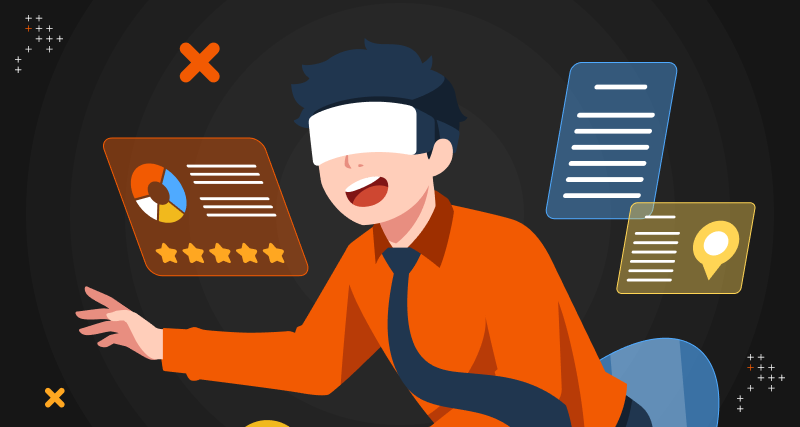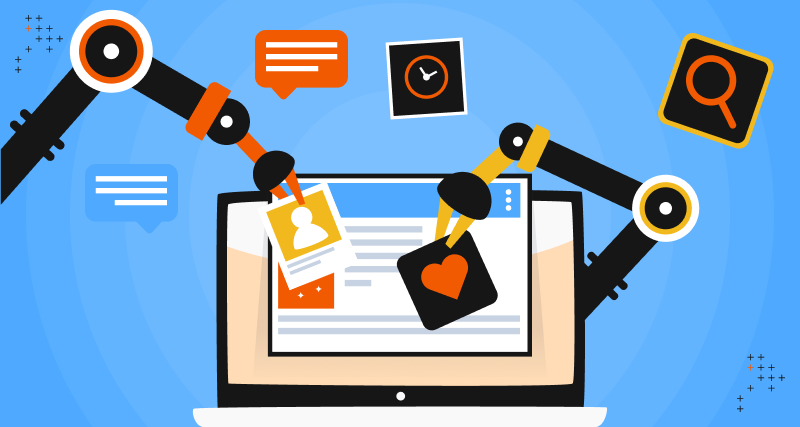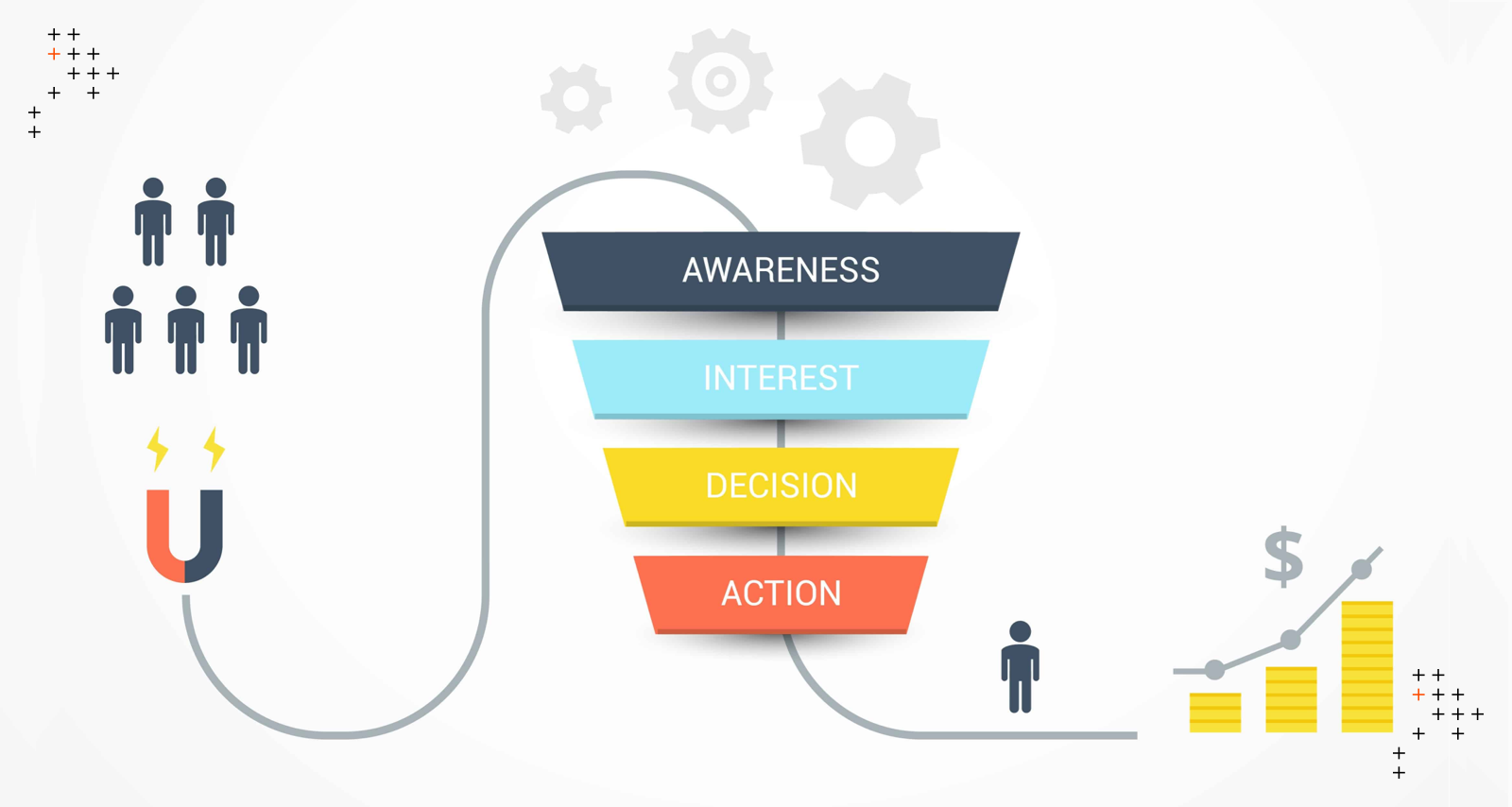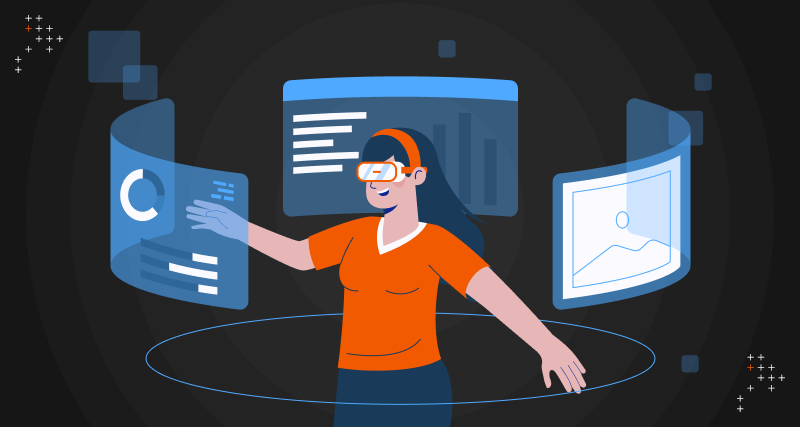Introduction
With 71% of customers expecting personalized business communications, personalization in digital experiences is no longer a differentiator—it’s a necessity.

Customers demand relevance at every touchpoint, and brands that fail to deliver, risk losing engagement, loyalty, and, ultimately, revenue. Yet, many organizations struggle with:
- fragmented data
- Inconsistent execution
- Outdated technology
At Axelerant, we believe that personalization is not just about inserting a user’s name into an email—it’s about delivering meaningful, predictive, and real-time digital experiences at scale. But where does your organization stand today? And what’s the right path forward?
Why Organizations Struggle With Personalization At Scale

Many businesses recognize the importance of personalization but find themselves stuck in execution. Common challenges include:
- Siloed or inaccessible customer data, limiting a unified view of user behavior.
- Lack of real-time decision-making, making experiences feel reactive rather than proactive.
- Content limitations, where static messaging fails to adapt to audience preferences.
- Technical bottlenecks, where legacy infrastructure can’t support dynamic personalization.
- Organizational misalignment, where marketing, IT, and leadership have different expectations.
These challenges lead to disconnected experiences, lower engagement, and missed revenue opportunities. However, organizations that implement a structured, maturity-driven approach can move from ad-hoc personalization to scalable, AI-driven experiences.
Take The Personalization Maturity Assessment
To determine where you stand, we have developed a Personalization Maturity Assessment that evaluates your organization’s capabilities across five critical areas:
- Data Collection & Management – Are you leveraging a centralized, structured approach to collecting and utilizing customer data?
- Technical Infrastructure – Is your architecture flexible and scalable enough to support real-time personalization?
- Content Readiness – Is your content strategy aligned with personalization, allowing for modular, data-driven experiences?
- Analytics & Optimization – Do you measure personalization effectiveness and refine your approach based on real insights?
- Organizational Readiness – Do you have the internal expertise, processes, and leadership buy-in to scale personalization?
By completing the assessment, you will receive:
✔ Your personalization maturity score
✔ An in-depth report on your current capabilities
✔ A tailored roadmap to advance to the next level
Axelerant's Personalization Maturity Assessment
Decoding Your Personalization Maturity Level
Personalization isn’t an all-or-nothing approach—it evolves. Depending on your current capabilities, your organization may be laying the groundwork, optimizing segmentation, leveraging AI for dynamic experiences, or delivering real-time, omnichannel personalization.
Based on your Personalization Maturity Assessment score, you’ll fall into one of these four levels.

Level 1: Foundation Building (0-25%)
The Starting Point: Limited Personalization, Manual Execution
At this stage, personalization is minimal or non-existent, often limited to basic static content with no real-time decision-making. Customer data may be collected, but it’s not structured or unified, making it difficult to leverage for meaningful personalization.
Common Characteristics At Level 1
- Basic Profile-Based Personalization: Simple token replacements (e.g., inserting a user’s name in emails).
- No Real-Time Adaptability: Content remains the same for all visitors, regardless of past behavior.
- Minimal Segmentation: At best, there may be a distinction between new and returning users.
- Siloed Customer Data: No centralized system for integrating behavioral insights across channels.
- Limited Content Strategy: Personalization efforts rely on generic messaging rather than tailored experiences.
Challenges You Might Face
- Data Gaps: Customer data is collected in disparate systems, making it difficult to activate for personalization.
- Lack Of Testing And Optimization: No structured A/B testing to measure what resonates with different audiences.
- Technical Constraints: Existing CMS and marketing tools may not support dynamic personalization.
Next Steps To Advance To Level 2
- Implement A CMS With Basic Personalization Capabilities: Start using dynamic templates for content variation.
- Begin Structured Data Collection: Establish a single source of truth by integrating customer data platforms (CDPs).
- Run Basic A/B Tests: Test different content versions to learn what engages users.
Level 2: Segment-Driven Optimization (26-50%)
Moving Beyond Basic: Data-Backed Personalization Across Segments
At this level, organizations have defined audience segments and can personalize experiences based on user behaviors, demographics, or past interactions. However, these experiences are still largely rule-based and not dynamically adapting in real-time.
Common Characteristics At Level 2
- Behavioral Targeting Begins: Personalization shifts from basic profile data to segment-based strategies.
- Multi-Channel Messaging: Email, web, and paid media campaigns are targeted based on audience groups.
- Category Affinity Targeting: Users who engage with specific types of content (e.g., luxury products, fitness guides) are grouped into relevant segments.
- Automated Email Journeys: Triggered emails based on user actions, like cart abandonment or content downloads.
- Basic A/B And Multivariate Testing: Experimentation is introduced but not yet automated or AI-driven.
Challenges You Might Face
- Rule-Based Personalization Limits Flexibility: Hardcoded segments can’t adapt quickly to user intent.
- Data Integration Remains A Hurdle: While data is being collected, it may still be fragmented across systems.
- Content Production Struggles: Teams may find it challenging to create enough variations for personalized experiences.
Next Steps To Advance To Level 3
- Enhance Behavioral Tracking: Implement event-based tracking to capture real-time user behavior.
- Move Beyond Static Rules: Start using machine learning models to refine audience segmentation dynamically.
- Expand To Predictive Personalization: Leverage AI-driven recommendations instead of only past behavior triggers.
Level 3: Algorithmic Enhancement (51-75%)
Predictive and AI-Driven Personalization at Scale
At this stage, AI and machine learning play a crucial role in tailoring experiences dynamically. Organizations predict user intent, optimize content delivery in real-time, and deliver personalized recommendations across multiple channels.
Common Characteristics At Level 3
- AI-Powered Product/Content Recommendations: Personalized suggestions based on browsing behavior and previous interactions.
- Predictive Personalization: Anticipating what a user might be interested in next rather than relying solely on past actions.
- Dynamic Content Delivery: Content, messaging, and even UI elements adjust in real-time based on contextual data.
- Cross-Channel Personalization: Seamless experiences across web, mobile apps, email, and paid media platforms.
- Data-Driven Content Strategy: Content is modular and tagged for automated personalization.
Challenges You Might Face
- Data Complexity: Managing large-scale real-time data streams requires advanced analytics and AI expertise.
- Content Fragmentation: If personalization isn't mapped properly, users may experience inconsistent messaging across channels.
- Scalability Bottlenecks: As personalization efforts grow, existing tools may struggle to support real-time AI-driven decision-making.
Next Steps To Advance To Level 4
- Unify Customer Profiles: Integrate a Customer Data Platform (CDP) to consolidate behavioral, transactional, and demographic data.
- Expand Real-Time Personalization: Move from segment-based recommendations to truly individualized experiences.
- Implement Continuous Experimentation: Use AI-driven optimization to personalize content dynamically at scale.
Level 4: Unified Experience (76-100%)
Seamless, Omnichannel, AI-Driven Personalization in Real Time
Organizations at this level operate with a fully integrated, real-time personalization strategy that adapts dynamically across every touchpoint. AI continuously learns, optimizes, and refines the experience for each individual user.
Common Characteristics At Level 4
- Real-Time, Omnichannel Personalization: Seamless and context-aware experiences across all digital channels.
- AI-Powered Decisioning Engine: Personalized experiences are fully automated and self-optimizing.
- Advanced Attribution Modeling: AI determines which personalization efforts drive the highest conversions.
- Predictive Customer Journey Mapping: Anticipating future interactions based on behavioral trends.
- Personalized UI/UX: Even website layout and navigation dynamically adjust to user preferences.
Challenges You Might Face
- Ethical AI Concerns: Ensuring personalization remains privacy-compliant and non-intrusive.
- Scalability Demands: AI-driven personalization requires high-performance cloud-based infrastructures.
- Balancing Automation With Human Oversight: AI should complement, not replace, human-driven strategic decision-making.
Next Steps To Maintain And Optimize
- Leverage AI For Omnichannel Journey Orchestration: Deliver experiences that evolve beyond digital to physical interactions.
- Automate Personalization At Scale: Use AI-generated content to match dynamic user needs without increasing content production overhead.
- Refine Personalization Impact Measurement: Implement multi-touch attribution models to optimize personalization investments.
Beyond Assessment: Turning Insights Into Action
Taking the Personalization Maturity Assessment is just the first step. The real value comes from translating insights into a strategic action plan that drives measurable improvements in your digital experience.
Once you receive your personalization maturity score, you’ll gain a deeper understanding of where your organization stands. More importantly, you’ll get access to exclusive downloadable content that includes:
✔ Personalized Roadmap to bridge the gap between your current state and the next level of personalization maturity.
✔ Technology Recommendations for implementing AI-driven personalization, upgrading your data infrastructure, or refining your content strategy
✔ Optimization Metrics to track personalization impact, ensuring that your initiatives are delivering real business value.
✔ Best Practices tailored to your organization’s current personalization maturity stage
This isn’t just about knowing where you stand—it’s about creating a clear path forward that transforms personalization from an isolated tactic into a core driver of digital success.
The Future Of Digital Personalization
The future of digital experiences lies in predictive, self-optimizing personalization that adapts to users in real time. Organizations that embrace a data-driven, AI-powered approach will lead in customer engagement, retention, and revenue growth.
At Axelerant, we help businesses transform their DXP strategies with scalable, cutting-edge personalization solutions. Whether you’re just starting or looking to optimize an advanced strategy, our expertise in DXP, AI-driven personalization, and customer data strategy can accelerate your journey.
Want to know how Axelerant's experts can help you achieve your personalization goals?
Speak to our experts.

Jitesh Khatwani, Associate Consultant
Obssessed with cricket and minesweeper, he prefers staying away from books and movies. He hates slow internet.
%20copy.png)
Sayan Mallick, Marketing Assistant
A former professional e-sports player, passionate about anime and technology—that’s Sayan. He is an eccentric explorer who likes to read, play games, teach, and spend time with his pet dog, Buddy.

 We respect your privacy. Your information is safe.
We respect your privacy. Your information is safe.



Leave us a comment